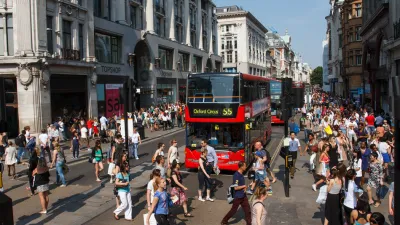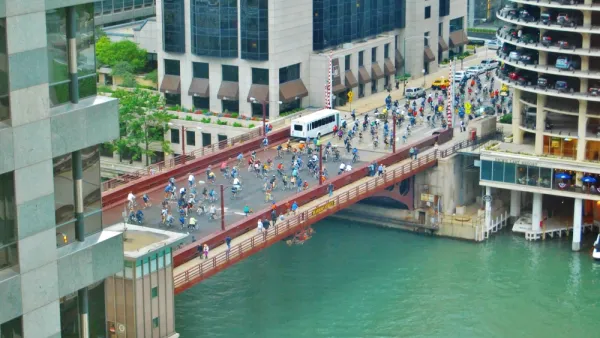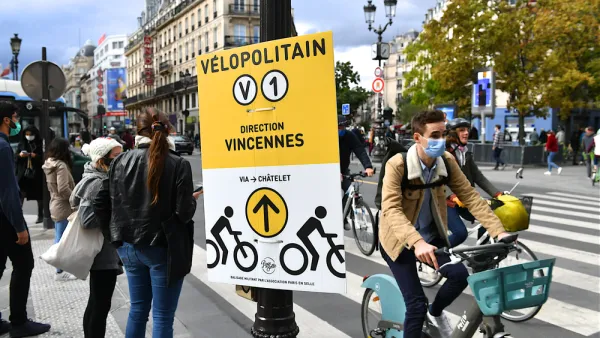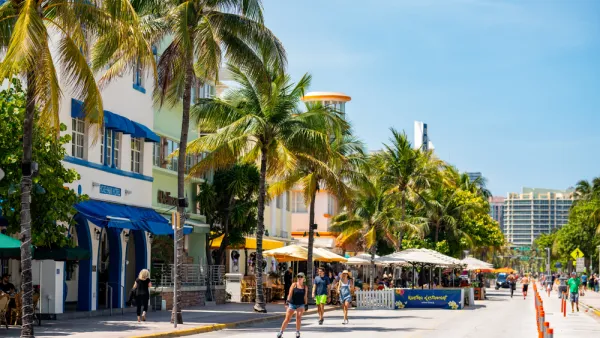As local councils debate making permanent changes implemented last year, can pedestrian and cycling advocates hold on to their victories?

Since the start of the pandemic, writes Niamh McIntyre for The Guardian, England's roads have been the testing grounds for a "grand experiment" that has led to a bitter standoff between pedestrian advocates and motorists. As part of mayor Sadiq Khan's Streetspace plan, implemented last year as an "urgent and swift response" to the pandemic and London's broader need to reduce congestion and pollution, "funnelled money from the government’s new active-travel fund to London’s boroughs for low-traffic neighbourhoods (LTNs) and other projects to encourage walking and cycling, such as temporary cycle lanes and timed road closures outside schools."
Since almost half of London car trips are under two miles, "the theory is that by reducing the amount of road space for cars, people will find other ways to make short journeys." Opponents argue that not everyone can easily take alternate routes, and that the measures only increase traffic and congestion on other streets—an assertion not borne out by evidence: "early monitoring of new LTNs in Hackney and Lambeth found that traffic on main roads hardly increased at all," and "data from established LTNs in Walthamstow showed the opposite."
While early "enthusiasm for LTNs brought about a rare consensus between the Conservative government and the Labour mayor of London, as well as Greens and pro-cycling groups," the backlash as traffic returns to London streets has been severe. In addition to DIY removal of LTN infrastructure, "opponents of the mayor’s walking and cycling plans have pursued numerous legal challenges to the new policies."
The future of LTN and other programs started during the pandemic will hinge on the next few months "as councils push for temporary schemes to become permanent, and objectors fight for the right to drive wherever they need to go."
FULL STORY: Traffic wars: who will win the battle for city streets?

Analysis: Cybertruck Fatality Rate Far Exceeds That of Ford Pinto
The Tesla Cybertruck was recalled seven times last year.

National Parks Layoffs Will Cause Communities to Lose Billions
Thousands of essential park workers were laid off this week, just before the busy spring break season.

Retro-silient?: America’s First “Eco-burb,” The Woodlands Turns 50
A master-planned community north of Houston offers lessons on green infrastructure and resilient design, but falls short of its founder’s lofty affordability and walkability goals.

Test News Post 1
This is a summary

Analysis: Cybertruck Fatality Rate Far Exceeds That of Ford Pinto
The Tesla Cybertruck was recalled seven times last year.

Test News Headline 46
Test for the image on the front page.
Urban Design for Planners 1: Software Tools
This six-course series explores essential urban design concepts using open source software and equips planners with the tools they need to participate fully in the urban design process.
Planning for Universal Design
Learn the tools for implementing Universal Design in planning regulations.
EMC Planning Group, Inc.
Planetizen
Planetizen
Mpact (formerly Rail~Volution)
Great Falls Development Authority, Inc.
HUDs Office of Policy Development and Research
NYU Wagner Graduate School of Public Service




























